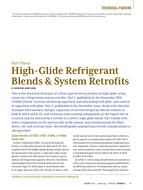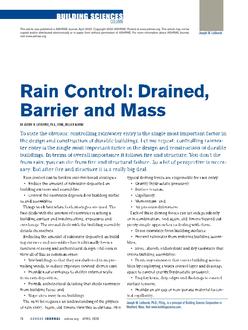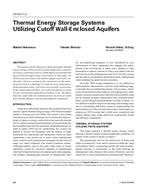Laboratory fume-hood systems are a prime target for energy conservation because of their large ventilation requirements. Air-to-air heat recovery methods using wheels, heat pipes, plate heat exchangers or runaround coils have been applied since the oil embargo of 1973. made them economically justifiable. Although these methods reduce energy consumption significantly, there are other candidates in a laboratory fume-hood system that can be examined for further reduction in energy usage.
Air-handling systems must supply and exhaust from 4 to 8 cfm/ft² (20.3 to 40.6 L/s x m²) at static pressures of up to 6 in w.g. (1.5 kPa). This fact suggests a variable-volume system, but fluctuating pressures in such systems threaten laboratory and fume-hood safety unless properly controlled. Another opportunity for energy conservation is the use of auxiliary air-type fume hoods that use 70% to 95% partially conditioned air at the hood; the balance is exhausted from the room. In addition, evaporative cooling of the fume hood exhaust before it enters the air-to-air heat-recovery device has also been used in some systems to enhance energy recovery.
All of these aspects have been integrated into the laboratory fume-hood system design for the Energy Center at the University of Oklahoma to minimize energy consumption.
Citation: Symposium, ASHRAE Transactions, 1983, vol. 89, pt. 2B, Washington, D.C.
Product Details
- Published:
- 1983
- Number of Pages:
- 10
- File Size:
- 1 file , 750 KB
- Product Code(s):
- D-DC-83-10-2


